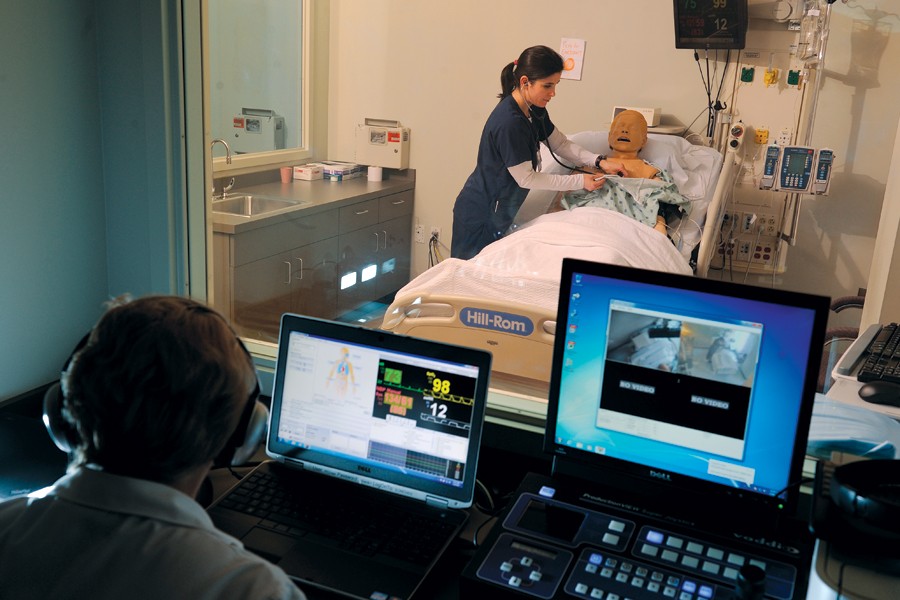"Meet Jack. He's a 51-year-old man complaining of chest pains with a family history of heart disease and a high cholesterol level. He wants to go home. As you can see, Jack's also mostly plastic and vinyl, and in good hands.
"The Johns Hopkins School of Nursing is one of 10 schools across the nation participating in the National Council of State Boards of Nursing simulation study to determine the effectiveness of simulation in teaching clinical nursing.
"In our state-of-the-art Simulation Center, students take part in scenarios in all the clinical specialties in nursing, which include psychiatric, pediatric, and public health nursing.
"We endeavor to make the situations as real as possible. The students are there as nurses, not student nurses; thus they are in the position of being responsible for learning to provide care at a different level. They learn to think like a nurse as they work their way through each scenario. How can they make the patient more comfortable? Should an attending physician be notified when a symptom presents itself?
"From a neighboring control room, faculty can manipulate the simulation, adjust patient vital signs, and interact with the students via role-playing. We are the voice of the patient and may be any of the other professional voices as needed by the scenario or in response to a student's requests for information or assistance. We also invite other faculty to join us in the studio to add other voices.
"We meet with the students immediately afterward. In the debriefing, we start by eliciting the patient's story and medical history. We ask the students what went right and what they would like to change if they did the scenario over. From there, we move to the concepts critical to understanding and giving care for the particular situation.
"These might not be real patients, but through them our students are learning to care for real situations they might not otherwise encounter during their nursing curriculum. The manikins have been the patients in over 100 different scenarios."
Posted in Health, Science+Technology
Tagged medical simulation








